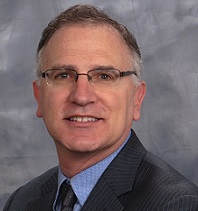 By Bennett Lauber, Chief Experience Officer, The Usability People
By Bennett Lauber, Chief Experience Officer, The Usability People
Twitter: @UsabilityPeople
In the classic Alfred Hitchcock film “Rope,” Hitchcock shot continuous scenes for periods lasting up to 10 minutes (the length of the film camera magazine), continuously panning from actor to actor, though most shots in the film wound up being shorter. Every other segment ended by panning against or tracking into an object—a man’s jacket blocking the entire screen, or the back of a piece of furniture, for example.
In doing this, Hitchcock effectively masked half the cuts in the film.
However, at the end of each 20 minute segment of Rope (the length of one reel of film on the projector in the movie theater), the projectionist—when the film was shown in theaters—had to change reels. Hitchcock knew this, and on these changeovers, he cuts to a new totally camera setup, deliberately not disguising the cut.
Hitchcock fully understood the technology used to present his films, and made specific directed modifications to the overall production to better match the technology of the final presentation to his audience in the theaters.
While traveling back from a conference in Philadelphia we were listing to some old Beatles tunes on an iPod. I’m a big Beatles fan, but although the writing, music and lyrics of these songs are excellent, I noticed that the Beatles didn’t fully understand the power of stereo recording. They presented the final mix of the song with the drums on one side, guitar on the the other, bass on both, etc. Sure, back in the early days of stereo the recording technology was limited, but the engineers at the time, unlike Hitchcock, didn’t fully understand how to fully take advantage of the recording equipment.
Compare that to Pink Floyd’s “Dark side of the moon,” where in 1972 the engineers completely understood and exploited the recording technology to produce a rock masterpiece that is still at the top of the Billboard charts.
Health IT is like the early Beatles. There are some really great applications out there, and in theory they should help to improve the lives of those that use them. In practice, there are a number of fundamental flaws that stem from not fully understanding the power of the technology that is used to present solutions to doctors and patients. We need to be more like Alfred Hitchcock!
We are currently at the “elbow” of an exponential growth curve of mobile, connected applications. For a mobile application to be successfully in this new world, it needs to fully embrace the connected mobile technology and the power that a ubiquitous high speed network, that connects to a light weight, vibrating, touch screen, GPS, an accelerometer, camera, speakerphone, microphone, Bluetooth enabled device, along with serious amounts of computing power and data (and cloud) storage.
Some random thoughts on mobile applications for healthcare:
Location aware is a must. Phillips has location-based LCD lighting that can provide medical professionals an exact location within a building. Connecting to the fastest network available given the current location seems doable.
Updating next patient information in the background while the clinician is walking down the hall towards the patient sure sounds nice. Why not provide coordinated haptic and auditory feedback for notifications and select user activity?
Using barcodes, and/or QR codes for linking to databases for just-in-time information. We should be able to wirelessly connect to various medical devices via Bluetooth and analyzing the data in real time (like an EKG).
There is a lot on great technology that we can exploit to make the doctor and patient experience better and safer.
We do have to make sure that you don’t use technology for technology’s sake. Like the early websites that had a fancy flash introduction—of which most of us just clicked on “skip.” See a previous blog post.
When you designing mobile applications for healthcare, or any other domain, we need to make sure that we follow the lead of Alfred Hitchcock. Figure out what the device can do and design your application to fully exploit the current technology, all while meeting the needs of the audience.
About the Author: Bennett Lauber is the Chief Experience Officer for The Usability People. An executive User Experience and usability team leader with experience managing cross-functional teams responsible for designing, developing and testing healthcare, consumer, and enterprise-class data management systems for desktop, mobile and tablet devices. Member ONC HITPC Implementation, Usability, & Safety Workgroup. This article was originally published on The Usability People and is republished here with permission.
